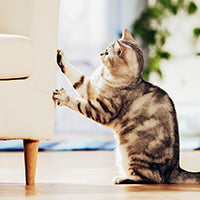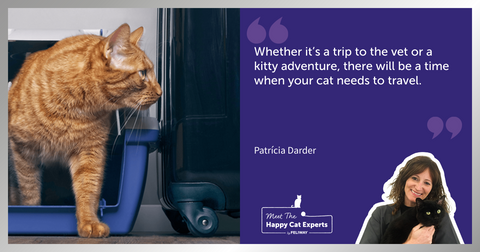
How to Have the Best Relationship With Your Cat
How would you describe your relationship with your cat? Did you know that there are lots of ways you can build your bond - even if you’re already the best of friends?
And, building a pet relationship is good for our health. The past few years have, of course, helped to highlight the immense value that companion animals (in particular cats and dogs) bring to our lives.
Indeed, science suggests that spending time with cats can help improve both our physical and mental wellbeing, providing us with much-needed comfort and companionship.
However, as is the case in any relationship, sufficiently meeting the needs of both individuals can be tricky, especially when they are two very different species!
For example, humans' social needs can be quite different from those of cats; we are generally very tactile and tend to seek support from others when upset.
In contrast, cats often find too much handling uncomfortable and may prefer to hide or be alone when stressed. While some cats have coped with our altered lifestyles and increased presence at home over the pandemic, others may have struggled. Indeed, many cats may have been less than thrilled by the additional commotion at home and the increased attention we have wanted to lavish upon them during this time.
Although these changes in our home dynamics may have put a little strain on our cat-human relationships, the good news is that there’s plenty we can do to get things back on track!

Top tips for the purrfect cat-human relationship:
1. Think about quality rather than quantity. When it comes to social interactions and petting, each cat will have their own specific preferences for when, where, and how much they are comfortable with. In general, a ‘less is more’ strategy works best and especially in the beginning as you start to learn their preferences.
Try taking a more passive approach and letting the cat make most of the moves (essentially let them stroke you, rather than the other way around). Pay close attention to their body language and adjust what you do accordingly. Over time, this will help you to get a better feel for exactly what ‘works’ and what doesn’t.
Research also suggests that applying this method can actually increase cats’ levels of friendliness and comfort whilst also decreasing their stress and levels of aggression.
2. Give cats as much autonomy as possible. Cats crave a sense of control over their lives – the ability to make various choices based on their individual preferences and the ability to remove themselves from situations they find unpleasant.
Avoid confining or restricting cats too much, allow them to come and go as they please and never force them to spend time with you. Cats can often simply tolerate interactions with us rather than enjoy them, so by letting cats decide when they want to be around us, we can be certain that they are thoroughly enjoying these interactions.

3. Allow cats to be cats! Like their wild ancestors, many domestic cats are still programmed to want to explore, stalk, chase, pounce, scratch, and seek out quiet places where they can rest or hide.
Try to provide cats with an environment that enables them to do all of these things as much as they need to. Many of the ‘problem behaviors' owners report about their cats can often be resolved by providing them with an environment more suited to their needs.
- Understand cats’ basic needs. To enable cats to fully enjoy their social interactions with us, they need to have their basic needs taken care of first and foremost. If a cat is anxious or stressed, bored, unwell or in pain, they are less likely to be interested in our affection and more likely to avoid us or behave aggressively.
To optimize your chances of building a good relationship with your cat, ensure they are physically healthy and able to feel safe and comfortable in their home.
- Be mindful of our expectations. Each cat is different and some are simply more sociable and affectionate than others. What’s important is to accept where each cat falls on the ‘sociability spectrum’ and to ensure that the interactions they have with people remain mindful of what they are comfortable with.
For some cats, this might be lots of stroking and cuddles, whereas for others it might mean rarely touching them at all. Additionally, even the most sociable of cats will appreciate some time alone.
It's a good idea to designate a room or area of the home as a ‘human-free’ zone. This could be a place where the cat already enjoys spending time or really any quiet location in the home that can be cordoned off for the cat. It could even just be a particular window ledge or cushion that the cat often sits on. If the cat is totally ignored when in this place, they should gradually learn that this is where they can go whenever they need to be ‘invisible’ or to ‘switch off’ without the risk of being disturbed.
Think about how to meet your cat’s needs and pay attention to their body language (especially during interactions). They will appreciate you for it - and you’ll have a more understanding relationship with them.

























